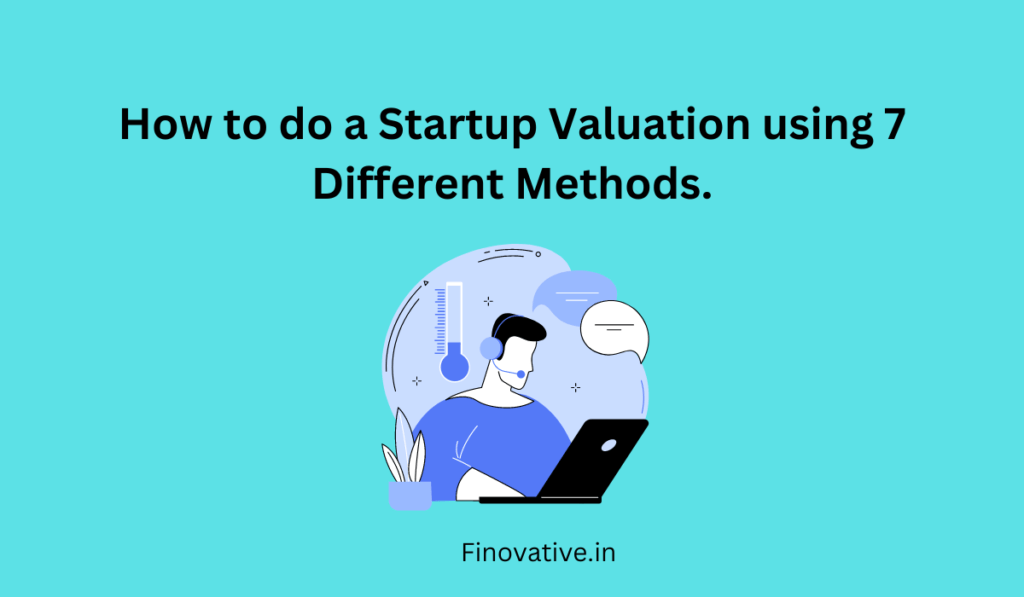Startup valuations show how well a company can use new capital to grow, meet the goals of customers and investors, and reach the next milestone. Today, hundreds of businesses are worth $1 billion or more and are called “unicorns.” There are now “decacorns,” which are startups worth $10 billion, and “hectocorns,” which are worth more than $100 billion.
Even though these figures are impressive, they are not as fair as you might think. When figuring out how much your startup is worth, your team’s skills, product, assets, business plan, total addressable market, competitor performance, market chance, goodwill, and other things may be considered.
If you know how much money you actually made, you can use that as a starting point. But when it comes to raising money, the real value of your business is what you and your partners agree it is worth. Most angel investors and venture capital firms use more than one method to determine how much a business is worth before putting money into it.
Putting a price on a new business is both an art and a science. Understand the different ways to value a startup, whether you’re in the pre-seed stage or just giving stock options to your workers. In this piece, we’ll talk about eight ways to determine how much your startup is worth and prepare for fundraising talks.
Startup Valuation Methods
There will always be some guessing involved in figuring out value, but you can help yourself by having certain things ready. Balance sheets and other financial records are very important. Be ready to look at your team’s skills and knowledge and find its strengths and weaknesses.
You can check online indexes and public business reports, or you can use databases like AngelList or Crunchbase to directly compare the value of your business to that of related businesses.
Valuations will always be different in different places, businesses, and time periods. For example, a proptech startup in Silicon Valley that started in 2009 shouldn’t be used to judge a proptech startup in Boston that starts in 2020. And a B2B company’s inputs may be very different from those of a B2C business.
1. First, The Berkus Method.
Dave Berkus, a venture capitalist, made the Berkus Method to figure out how much a startup business is worth before it starts making money, i.e., before it starts selling a lot of its goods. The idea is to put dollar numbers on five of the most important measures of success for startups in their early stages.
The simple method helps founders and investors avoid wrong valuations based on projected revenues, which few new businesses meet in the expected time period.
This method puts valuations before sales at $2 million and valuations after sales at $2.5 million. Even though it doesn’t take into account other market factors, the restricted scope is good for businesses that want a simple tool.
2. The method of comparable deals.
The Comparable Transactions Method is one of the most popular ways to figure out how much a company is worth because it uses past examples. You are giving an answer to the question, “How much did companies like mine sell for?”
For example, let’s say that the shipping business Rapid was bought for $24 million. 700,000 people used its website and app on their phones. That works out to about $34 per user. There are 120,000 users of your shipping business. Your business is worth about $4 million based on this.
You can also find the income multiples of companies in your industry that are like yours. In your market, it might be common for SaaS companies to make 5x to 7x the net sales of the previous year.
Any model for comparing two businesses needs to take into account ratios or rates for anything that is very different between the two. For example, if another SaaS company has proprietary technology and you don’t, you might want to use the multiplier on the lower end of the range, like 5x (or lower) in our case. The Market Multiples Approach is like this method.
3. The scorecard way of judging.
The Scorecard Method is another choice for businesses that are not yet making money. It also works by comparing your startup to others that have already been funded, but with more criteria.
First, you find the average value of similar companies before they get any money.Then, you’ll think about how your business compares in terms of the following things.
• The team’s strength: 0–30%
• The size of the chance: 0–25%
• Good or service: 0% to 15%
• Level of competition: 0–10%
• Marketing, sales platforms, and partnerships: 0% to 10%
• Need for more investment: 5% or less
• Other: 0% to 5%
Then, you’ll compare each feature by giving it a percentage. In general, you can be on par with your competitors (100%), below average (100%), or above average (>100%) for each quality. For example, you give your ecommerce team a score of 150% because it is complete, well-trained, and has experienced coders and marketers, some of whom come from competing businesses. 30% times 150% gives you a factor of.45.
Do this for each feature of a startup and add up all the factors. Lastly, multiply that number by the average valuation in your business area to get your pre-revenue valuation. In this explanation, Bill Payne, who came up with the method, shows you exactly how to give percentages and weigh each factor.
4. The cost-to-duplicate strategy.
The name of this method gives away how it works. You’re figuring out how much it would cost to start up your business somewhere else, without your name or goodwill.
You just add up what your physical goods are worth on the open market. You can also add prices for research and development, making a product prototype, getting a patent, and other things.
One big problem with this method is that it doesn’t take into account the full value of a company, especially if it’s making money. When figuring out how much your company is worth, you may have to leave out important factors like how engaged your customers are.
5. The method of risk factor synthesis.
This is a wider way to figure out how much your company is worth. Start by putting a value on the property using one of the other ways described here. Then, change that amount by multiples of $250,000 based on the risks that could affect your business.
Low-risk parts get a score of ++, which means your valuation goes up by $500,000. High-risk parts get a score of double-minus (–), and $500,000 is taken away.
For example, if your online custom clothing shop has a small but real chance of competition, you can give it a good grade but only add $250,000.
Here are the 12 most popular types of risk:
1. Management
2. The business’s stage
3. Risks related to laws and politics
4. Risk of making things 5. Risk of selling and marketing
6. Risk of getting money or capital
7. Risk of the competition 8. Risk of technology
9. Risk of a lawsuit
10. Risk on a global scale
11. Risk to reputation
12. Possible profitable exit
The hardest part of this method is finding a way to measure each part that is based on facts. Comparable ways, like the Scorecard Method or the Comparable Transactions Approach, may be a good place to start.
6. Method of discounted cash flows.
The Discounted Cash Flow (DCF) Method is another way to figure out how much a business is worth. To use this method, you might need to work closely with a market expert or an investor.
You add a discount rate, or the expected rate of return on investment (ROI), to your projected future cash flows. In general, the riskier an investment is, the higher the discount rate, and the higher your growth rate needs to be.
The idea behind this is that investing in new businesses is riskier than investing in businesses that are already up and running and making steady money.
The First Chicago Method, which builds on the DCF method, is another option. It takes into account three different situations: one in which the company doesn’t do as well as expected, and two in which it does even better. This gives you three different business valuations.
The way venture cash is used.
As the name suggests, venture capital companies often use this method. If you need a pre-revenue valuation, it’s something else to think about. It also shows how buyers think when they want to get out of a business in a few years.
There are two ways to figure out how much something is worth:
• Expected Return on Investment (ROI) = End Value – Post-Money Valuation
• Post-money valuation = final value minus expected return on investment
First, you’ll figure out the expected selling price of your startup after the VC company has invested. You can find this out by using the price-to-earnings ratio or the estimated revenue multiples for your business.
Find the expected ROI, like 10x, and plug in the other numbers to get your post-money value. From there, take away the amount of money you want to get invested to get your “pre-money valuation.”
7. Method of book value.
By using the book value method, you can get an asset-based estimate. It’s like the cost-to-duplicate method, but it’s even easier.
Usually, a new business’s book value is its total assets minus its total debts. In other words, the Book Value method ties your startup’s value to its net worth.


